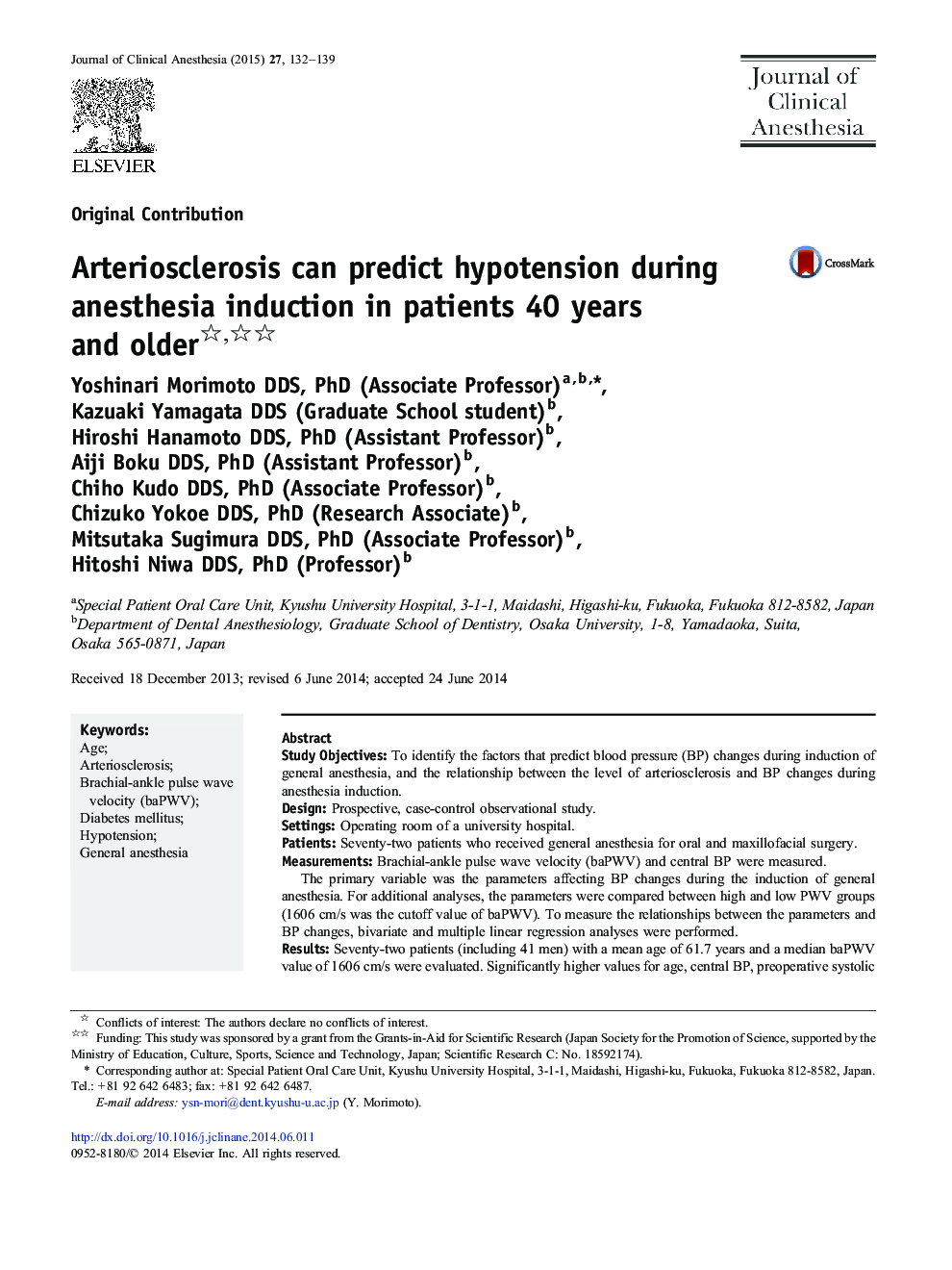| Article ID | Journal | Published Year | Pages | File Type |
|---|---|---|---|---|
| 2762420 | Journal of Clinical Anesthesia | 2015 | 8 Pages |
Study ObjectivesTo identify the factors that predict blood pressure (BP) changes during induction of general anesthesia, and the relationship between the level of arteriosclerosis and BP changes during anesthesia induction.DesignProspective, case-control observational study.SettingsOperating room of a university hospital.PatientsSeventy-two patients who received general anesthesia for oral and maxillofacial surgery.MeasurementsBrachial-ankle pulse wave velocity (baPWV) and central BP were measured.The primary variable was the parameters affecting BP changes during the induction of general anesthesia. For additional analyses, the parameters were compared between high and low PWV groups (1606 cm/s was the cutoff value of baPWV). To measure the relationships between the parameters and BP changes, bivariate and multiple linear regression analyses were performed.ResultsSeventy-two patients (including 41 men) with a mean age of 61.7 years and a median baPWV value of 1606 cm/s were evaluated. Significantly higher values for age, central BP, preoperative systolic BP (SBP), amount of decrease in SBP and diastolic BP, and number of patients with diabetes mellitus (DM) and hypertension were observed in the high PWV group. Multiple linear regression analysis demonstrated that age, baPWV, and DM were factors independently associated with the amount of decrease in SBP.ConclusionIn patients 40 years and older, age, baPWV, and DM are thought to be effective predictors of the amount of decrease in SBP during induction of general anesthesia.
